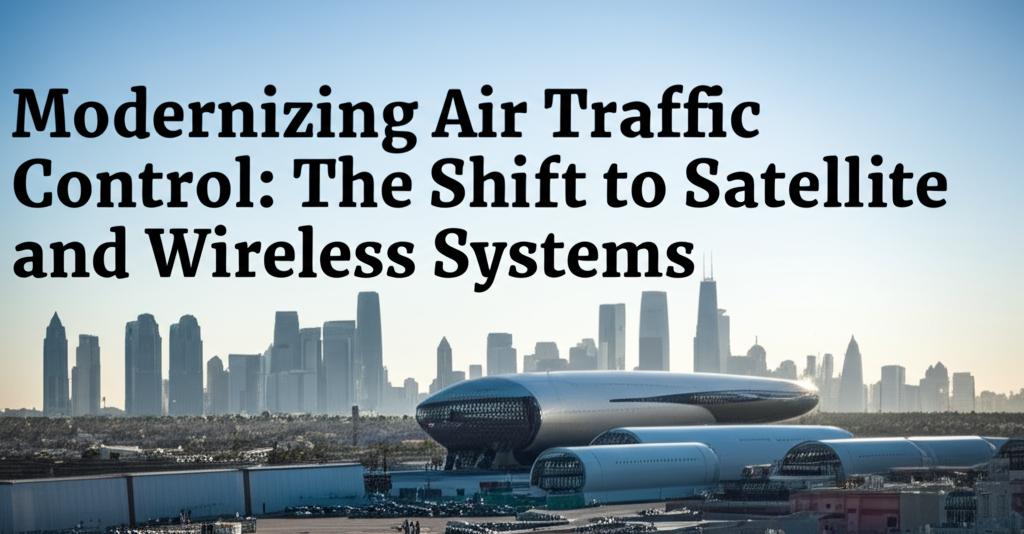The landscape of air traffic control (ATC) is undergoing a significant transformation, moving away from decades-old, ground-based radar systems towards more dynamic and precise satellite and wireless technologies. This modernization is driven by the need to enhance safety, increase efficiency, and expand capacity to accommodate the steadily growing global air traffic.
At the forefront of this shift are initiatives like the Next Generation Air Transportation System (NextGen) in the United States and the Single European Sky ATM Research (SESAR) programme in Europe. These large-scale projects are revamping ATC infrastructure, focusing on communications, navigation, surveillance, automation, and information management. A key technology in this evolution is Automatic Dependent Surveillance-Broadcast (ADS-B). ADS-B enables aircraft to automatically broadcast their precise GPS-derived position, altitude, speed, and other data to air traffic controllers and other ADS-B equipped aircraft. This provides a more accurate and real-time view of air traffic compared to traditional radar systems, which have limitations in coverage and update rates.
The adoption of satellite-based ADS-B (SB ADS-B) further extends surveillance capabilities, particularly over oceanic and remote regions where ground-based infrastructure is impractical or non-existent. LEO (Low Earth Orbit) satellite constellations receive and relay ADS-B data, enabling more direct routes, optimal altitude selection, and reduced separation between aircraft in these vast airspaces. This not only improves operational efficiency but also contributes to fuel savings and reduced emissions.
Wireless technologies are also playing a crucial role in modernizing ATC communications. Next Generation Data Communications (Data Comm) systems allow for digital text-based exchanges between pilots and controllers, supplementing traditional voice communications. This reduces the risk of miscommunication and streamlines the exchange of routine information, freeing up voice channels for more critical instructions. Furthermore, the transition from older telecommunications infrastructure, like copper wires, to modern fiber optics, wireless, and satellite networks is a critical undertaking to ensure a faster, more reliable, and resilient ATC system.
The integration of these new systems is facilitated by concepts like System Wide Information Management (SWIM). SWIM aims to provide a single point of access for aeronautical, flight, weather, and surveillance information, ensuring that the right information reaches the right people at the right time for collaborative decision-making.
Another significant advancement is the emergence of digital or remote towers. These systems use high-definition cameras, sensors, and data networks to provide a comprehensive view of the airfield, potentially from a remote location. This technology offers benefits such as improved situational awareness, operational flexibility, and potential cost savings, especially for airports with lower traffic volumes. Controllers can manage multiple airports from a single location, leading to more efficient resource allocation.
The modernization of ATC is not without its challenges. The integration of new technologies with legacy systems can be complex, requiring significant investment and careful planning. Ensuring the reliability, resilience, and cybersecurity of these digital systems is paramount, as any failure could have severe consequences. There's also a strong emphasis on the human element, ensuring that air traffic controllers are at the core of the system and are equipped with the necessary skills and tools to manage these advanced technologies effectively.
The increasing complexity of air traffic, including the introduction of new entrants like drones and advanced air mobility vehicles, further underscores the need for modernized ATC systems that can safely integrate these diverse operations.
Looking ahead, the continued integration of digitalization, automation, and potentially Artificial Intelligence (AI) promises further enhancements in safety, efficiency, and capacity. AI-driven predictive analytics could help forecast traffic patterns and potential conflicts, while automation could handle routine tasks, reducing controller workload. However, the development and implementation of such advanced AI systems for complex, safety-critical operations like air traffic control will require careful consideration and will likely be a gradual process.
In conclusion, the shift to satellite and wireless systems is revolutionizing air traffic control. Technologies like ADS-B, advanced data communications, and digital towers are enhancing surveillance, communication, and overall system efficiency. While challenges remain, the ongoing modernization efforts are paving the way for a safer, more efficient, and sustainable global aviation network capable of meeting the demands of the future.

